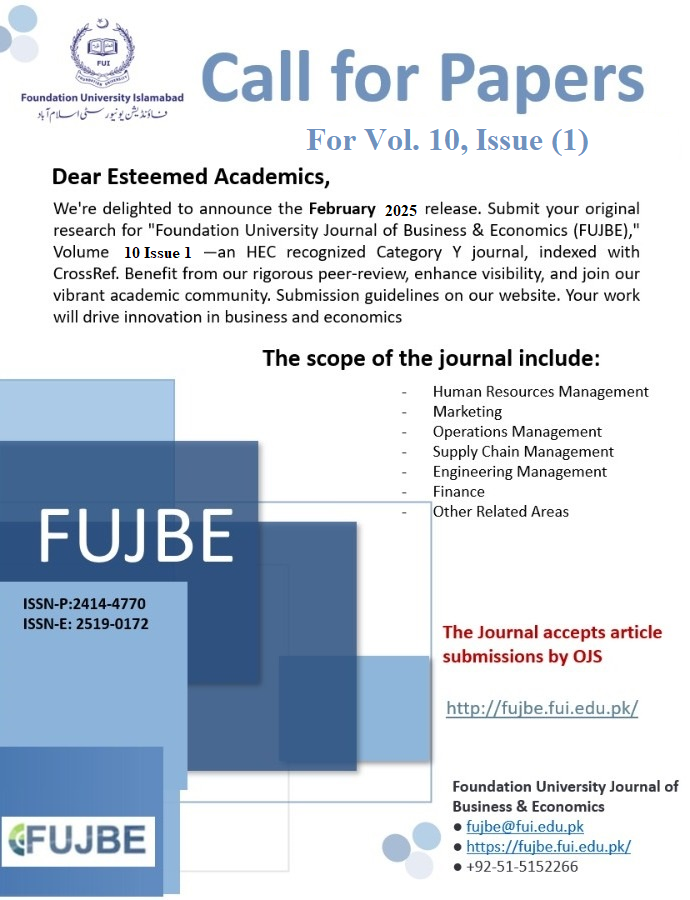Impact of Bilateral Real Exchange Rate on Bilateral Trade Balance: Evidence from Pakistan and Its Major Trading Partners
DOI:
https://doi.org/10.33897/fujbe.v9i2.927Keywords:
Bilateral Real Exchange Rate, Bilateral Trade Balance, Fully Modified OLS, Panel Data, GDP, Real Income. JEL Classification: F31, B27, C31, C33Abstract
This study investigates the impact of the bilateral real exchange rate on the bilateral trade balance of Pakistan
with its five major trading partners, namely the US, China, Saudi Arabia, Germany, and the UK. We utilize panel
data spanning from 1991 to 2018 for the six countries. We employ the fully modified OLS (FMOLS), and panel
error correction model (ECM) to explore the short-run as well as long-run dynamics of the relationships among
the variables. Since the cointegration procedure requires the investigation of the order of integration of variables,
we employ the panel unit root test to check the order of integration of variables. Before moving on to panel unit
root analysis, it is mandatory to check cross-sectional dependence. For this purpose, we employ a cross-sectional
dependence test designed by Pesaran (2004) which indicates the existence of cross-sectional dependence. Since
the presence of cross-sectional dependence requires a second-generation test for panel unit root analysis,
therefore, we employ the Fisher-ADF panel unit root test. The results of the test reveal that the trade balance is
stationary at level, while bilateral real exchange rate, domestic real GDP, and foreign real GDP are first-order
integrated. Further, the results of the FMOLS test reveal that both domestic real GDP and bilateral real exchange
rate harm the bilateral trade balance of Pakistan, while foreign real income has a positive impact on it. Moreover,
the results of panel ECM confirm the presence of a tendency of adjustment to the long-run equilibrium.



